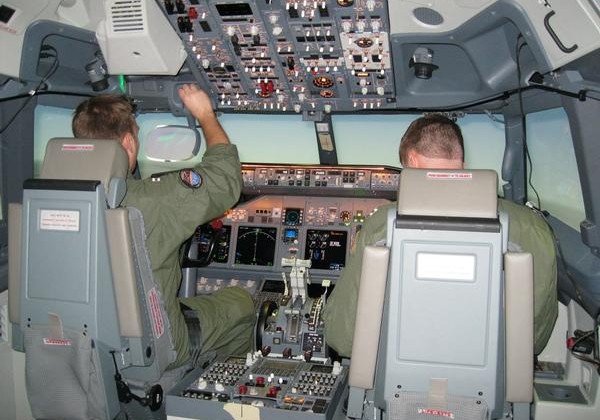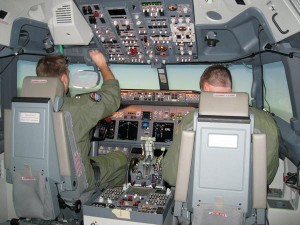Poseidon Sims Arrive


Naval officers from Patrol Squadron (VP) 30's fleet introduction team test the first P-8A Poseidon operational flight trainer (OFT) at Naval Air Station Jacksonville, Fla. (U.S. Navy photo)
With fleet introduction of the P-8A Poseidon aircraft on the horizon, the Maritime Patrol and Reconnaissance Aircraft (MPRA) community is preparing aircrew with the latest in simulation technology, thanks to the recent training devices installation and government acceptance at Naval Air Station Jacksonville, Fla.
The first operational flight trainer (OFT) and weapons tactics trainer (WTT), both developed by Boeing, St. Louis, Naval Air Warfare Center Training Systems Division, Orlando Fla., and Naval Aviation Training Systems program office (PMA-205), were delivered and placed in the state-of-the-art P-8A Integrated Training Center, at NAS Jacksonville on Dec. 16, 2011.
Each simulator will prepare future Poseidon pilots, naval flight officers and aircrew to perform in the newest Navy aircraft, expected to transition into Patrol (VP) squadrons beginning July.
The OFT is a full-motion, reproduction of the aircraft cockpit, which replicates the visual out-of-window display and cockpit noises. It simulates the systems, equipment and features, as well as the performance characteristics, for pilot mission-readiness and proficiency. When coupled with the WTT, they form a weapons systems trainer used for full aircrew mission training and readiness events. As a stand-alone configuration, the WTT is used for weapons and sensor employment, and communications training.
“Having been part of the MPRA community for 20 years, I know the fleet has anticipated this day for a long time,” said Capt. John Feeney, PMA-205 program manager. “With the delivery and institution of these trainers, as well as the new electronic classroom and courseware, the anti-submarine warfighter can train in the most realistic environment outside of the real world.”
The two training devices’ hardware was installed in November and software was added in December. Immediately after the software installation, Boeing and government personnel began fine-tuning components of the visual system and conducting acceptance test procedures to ensure all aspects of the simulators were in sync with aircraft capabilities.
“Delivery of the first P-8A OFT and WTT marks a significant step toward the P-8A transition,” said Lt. Cmdr. Daniel Papp, P-8A training systems integrated product team lead. “The fleet introduction team (FIT), VP-30 instructors who will train future P-8A aircrews, will continue their rigorous train-the-trainer syllabus in fleet representative trainers at NAS Jacksonville. While we still have plenty of work to do in preparation for transition, the hard work of our combined Boeing and government team made this effort possible.”
In spite of their heavy workload in preparation for training the fleet, the FIT has also played an important role in the development of the P-8A simulators. The team was integral to the development of courseware and training devices over the past several years and traveled to Boeing facilities on multiple occasions to assist in the progression and maturation of the trainers. After the trainers were accepted, it was the first opportunity for the FIT to refine the instructor syllabus using the actual device.
The P-8A Poseidon is the latest Navy aircraft designed to execute long-range anti-submarine and anti-surface warfare, intelligence, surveillance and reconnaissance missions. It will replace the P-3C Orion, which has been in operation for more than 50 years. Fleet transition from the Orion to the Poseidon begins in 2012.
Source: AIR-1.0 Public Affairs























